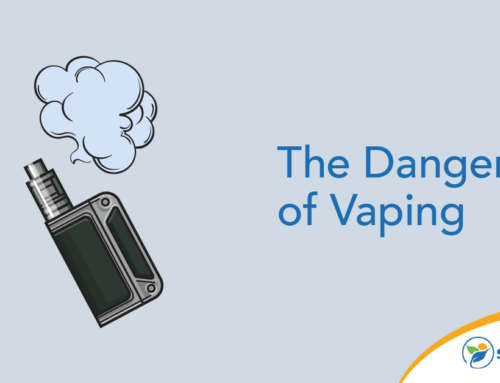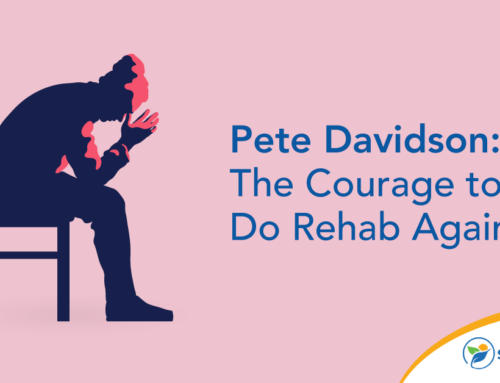Methadone is a useful drug that doctors prescribe to help patients better manage symptoms of withdrawal or cravings for illegal opioids. However, while taking methadone, it’s possible to experience itching of the skin, develop a rash or even break out in hives. Find out what other common methadone side effects on skin are associated with the drug and why the benefits of taking this medication often outweigh the potential discomforts.
What Does Methadone Treat?
Methadone is a drug that is often used to treat patients with dependence on other opioids. Those who are going through withdrawal symptoms and experiencing cravings for illegal drugs like heroin may be prescribed an oral daily dose of methadone to reduce withdrawal symptoms.
While methadone is useful in this context, it is still an opioid that can result in addiction and dependence when abused. However, it is still safer than illegal drug use for multiple reasons:
- It is taken under medical supervision.
- It’s taken orally, eliminating the risk of HIV transmission associated with many illegal opioids that are injected.
- It eliminates the need to participate in criminal activity to obtain the drug.
Methadone can be extremely beneficial to people who are in rehabilitation programs for illegal opioid use. Around 80% of inmates at an Australian prison who were starting methadone treatment reported using heroin in the previous month. Despite its usefulness, there are some common side effects associated with the drug to consider.
What Are the Methadone Side Effects on Skin?
Methadone has a long list of potential side effects and drug interactions that you and your doctor will consider before methadone is prescribed. One of these side effects is various effects on your skin. There have been recorded instances of angioedema, facial edema, flushing, pruritus, purpura, rash and urticaria after methadone use.
Hives, itching and skin rashes are potential side effects of taking prescription methadone. This can be an allergic reaction to the medication and should be reported to the prescribing physician right away. The doctor may recommend stopping usage or adjust your dosage.
Other Potential Side Effects
Methadone is a synthetic sedative drug that can cause a variety of effects on those who take it. Besides an effect on the skin, other potential impacts of taking prescription methadone include:
- drowsiness
- lightheadedness
- urinary retention
- gastrointestinal distress
- irregular heartbeat
- anaphylaxis
- tremors
- dry mouth
- constipation
- sexual impotence
Methadone can decrease sexual desire and impact sexual performance, specifically in men. Taking prescription methadone can result in an overall decrease in testosterone levels. A study in the Iranian Journal of Psychiatry found that the prevalence of erectile dysfunction in participants, taking methadone, was 1.5 times higher than that of the general public.
In a study out of Australia that looked at 103 men taking prescription methadone, 53% of married men reported experiencing erectile dysfunction. Of that group, 26% said the dysfunction was moderate to severe.
Weighing the Side Effects Against the Benefits
A study from 2010 found that after 6 months of taking prescription methadone, the general health of participants significantly improved. The drug is helpful for patients who are addicted to illegal opioids like heroin and require medical assistance and rehabilitation to manage withdrawal or cravings. However, its use is sometimes considered controversial due to the fact that methadone itself is an opioid, which can cause patients to develop dependence on it.
A controlled randomized clinical trial from 1995 to 1999 looked at the effectiveness of prescription methadone vs. 180-day detoxification programs. Overall, the trial concluded that patients who underwent methadone maintenance therapy (MMT) saw better treatment retention times, with a median of 438.5 days without heroin use. This was compared to the median number of days without heroin use for those in a detox program, which was 174 days.
Since MMT is significantly more effective than a detoxification program alone, it continues to be recommended by rehabilitation centers and their medical staff for some patients who are addicted to opioids. In many cases, the long-term health benefits of avoiding illegal drug use, particularly intravenous drug use, outweigh the risk of side effects from methadone, including itching from methadone or a methadone skin rash.
How Long Do Side Effects From Methadone Last?
The short-term side effects of methadone typically last around 1 to 5 hours. Peak respiratory depressant effects take longer to appear and last longer than the analgesic impact of the drug. When the drug is taken over a long period, the liver retains it and slowly releases it over time, increasing the duration of its effects.
Over time, you may develop desensitization to the effects of methadone and a tolerance for the starting dosage. This lessens side effects but may also make the benefits of the MMT less intense.
Alternatives to Methadone
MMT is not suitable for everyone, and some patients may experience allergic reactions to the medication. Similar to itching from tramadol, patients who experience itching from methadone may wish to seek alternative treatment solutions with less intense side effects. It may take several tries to match a patient with medication that fits their needs and establish the best dosage for their symptoms.
Buprenorphine is a common alternative to methadone that was proven effective in reducing heroin cravings and withdrawal symptoms in a 1992 study.
Similarly, a case report looked at sustained release of oral morphine in a patient who had suffered a reaction to methadone treatment. The SROM improved the patient’s condition and helped them abstain from illicit use of opioids.
At Sunlight Recovery, We Can Help
At Sunlight Recovery, we provide treatment programs for opioid abuse and heroin addiction, among other rehabilitation programs. Our medical detox program provides a safe, supervised environment for patients to manage withdrawal symptoms, with the help of medications. To find out if treatment at Sunlight Recovery is the right option for you or a loved one, contact us today for more information.







